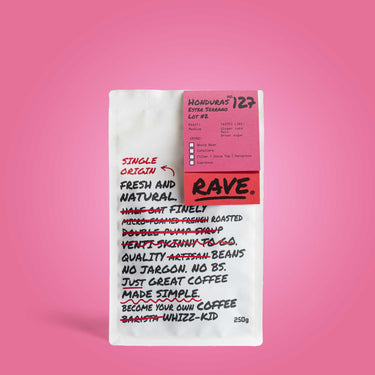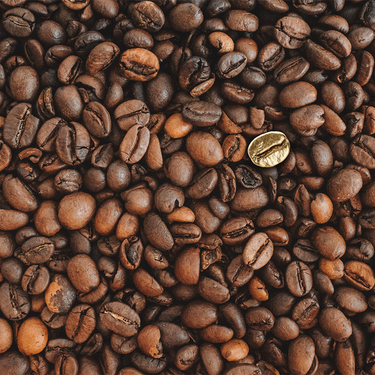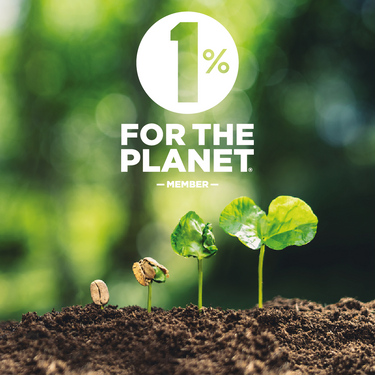
Altitude - 1,600 to 1,800 metres
Location - Between Takengon and Lake Tawar
Preparation - Semi-washed
Varietal- Mainly Bourbon and P88
Owners - Cooperative members
Certification - Organic and Fair Trade
Harvest - November to May
Shipment - December to June
Packing - 60 KG jute with GrainPro liners
Jagong Village
Jagong village was established during the 1980’s as a result of the Indonesian transmigration program, when Javanese people were offered land and a new start in Sumatra in an attempt to reduce the population on the overcrowded island of Java. Working alongside their new Gayonese neighbours the settlers started to produce arabica coffee. The village is located in the Central Aceh District south of Aceh’s capital Takengon and around 35 kilometres from Lake Tawar.
Altitudes of around 1,600 metres above sea level with rich and fertile soils bring about coffees that are unrivalled in their depth of body and often have fascinating complexity – possibly due to the way that the beans are processed. The coffee is semi washed and wet- hulled, a process that involves the part-drying of freshly pulped beans before removing the parchment then allowing the swollen and ‘blanched’ beans to be sun dried to a deep green colour.
There are 25 members of the Jagong village cooperative who grow organic bourbon and P88 arabica alongside cabbages, chillies and red beans on land that averages around one hectare in size.The harvest takes place between October and July and the coffee is stored in GrainPro sacks for shelf life longevity.
Gegarang Village
The history of Gegarang village is similar to that of Jagong’s since it was also a part of the Indonesian transmigration program that brought many Javanese people to Aceh to reduce the over population of Java during the 1980s. The village has 46 members who grow their organic coffee on plots of around one hectare at an altitude of 1,500 to 1,600 metres above sea level; other crops include potatoes and beans. Gegarang village is only 4 kilometres from Jagong and is situated between Takengon and Lake Tawar. The coffee varietals are mainly bourbon with some P88 and a little catimore, all of which is grown organically. The coffee is semi washed and wet-hulled, a process that involves the part-drying of freshly pulped beans before removing the parchment then allowing the swollen and ‘blanched’ beans to be sundried to a deep green colour. A very deep and full bodied coffee is the result with a tangerine sweetness lacing heavy chocolate. The harvest takes place between October and July and the coffee is stored in GrainPro sacks for shelf life longevity.
Sumatra
Coffee was planted in Sumatra by Dutch colonialists in the late 1600s under the guidance of the Dutch East India Trading Company - or Vereenigde Oost-Indische Compagnie (VOC) for our Dutch readers! Between 1602 and 1796 the VOC sent almost a million Europeans to work in the Asia trade on 4,785 ships, and netted for their efforts more than 2.5 million tonnes of Asian goods. With Europe’s ever increasing thirst for coffee at that time this commodity played an important role in the trade of Indonesia, as indeed it does today.
Following early success in Java, coffee was then introduced to Sumatra, initially to the northern region of Aceh around Lake Tawar. Today coffee is still widely produced in these northern regions of Aceh (Takengon, Bener Mariah) as well as in the Lake Toba region (Lintong Nihuta, Dairi-Sidikalang, Siborongborong, Dolok Sanggul, and Seribu Dolok) to the southwest of Medan.
Aceh has seen much civil unrest throughout its history, but most recently due to guerrilla activity organized under the Free Aceh Movement; as a result many farms were abandoned as farmers migrated to escape the unrest. Incredibly the devastation of the 2004 Boxing Day earthquake and tsunami did provide a silver lining as it focused international attention on Banda Aceh. Subsequent aid spotlighted the region and served to bring relative peace to Aceh for a time; now farms are being revitalized via new planting and pruning and hope is returning.
The arabica varietals planted in Indonesia were initially typica and bourbon. Typica is still the most common varietal found in Sumatra although there are also a few others that have been planted over the years, including: Linie-S, caturra, catimor and hybrids of Rue Rue 11. The first Linie-S plantings came about when the coffee research institute in Java began looking for strains that were both disease-resistant and consistent in production. In an attempt to alleviate the swing in production from crop to crop, Linie-S was planted (a variety prized for its heartiness and minimal dieback) and Robusta is also widely grown across the island.
The average farm size in Sumatra is small, just one to five hectares across the country, and different varietals can often be found growing together. Over the last 50 to 100 years this has led to hybridization; natural crossbreeding has produced a variety known locally as Berg en Daal.Sumatran coffees are mainly produced by a unique semi-washed process which is sometimes described as "wet-hulled" and is known locally as Giling Basah. In this process the coffee is picked, machine pulped (usually on the individual small holding) and then partly sun dried. The parchment is then removed revealing a whitish coloured, swollen green bean. The drying is then completed on the patio where the seed quickly turns to a dark green colour unique to Sumatra. This method brings about more body and often more of the character that makes Indonesians so unique and recognisable with flavours ranging from deep chocolate to tangerine funk.
There are around 68,000 hectares of coffee cultivated in Aceh by 65,000 farmers, which makes the average farm about 1 hectare. Aceh is a well-forested region with as many as 300 trees per hectare; approximately 90% of the production in Aceh is organic. Altitude in the cultivated area of Aceh ranges from 800 to 1,600 meters and coffee is harvested between November and May.
We have selected coffees from the Gayo Megah Berseri Cooperative in Aceh which is comprised of 554 members from 9 separate villages.
Cup Profile
Acidity: 7 - 7.5 – Acidity low
Sweetness: 7 - 8 - Solid sweetness
Character: 7.5 - 8.5 - Heavy dark couverture chocolate, rich and heavy
Body: 8.5 - 9 - Dependent on the roast
Balance: 8 - 8.5 - Smooth





